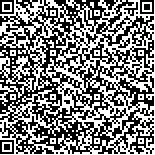下载中心
优秀审稿专家
优秀论文
相关链接
摘要

获取高精度的区域水稻种植面积对于农业规划、配置与决策具有重要意义。区域尺度的水稻面积获取依赖于高时空分辨率影像,但受卫星回访周期和气候影响,难以获取足够时间序列的高时空分辨率影像,从而影响水稻种植面积遥感提取的精度。为此,提出适应于中国南方多雨云天气地区,基于国产环境卫星(HJ-1A/1B)与MODIS融合数据的水稻种植面积提取的新方法。以洞庭湖区为实验区,利用STARFM模型融合环境卫星NDVI数据与MODIS13Q1数据,获取时间序列的环境卫星NDVI数据,利用水稻关键期的NDVI数据结合物候特征参数对水稻种植区域进行提取。结果表明,该方法能有效提取区域水稻种植的面积,水稻种植面积提取的总体精度与Kappa系数分别达到91.71%与0.9024,分类结果明显优于仅采用多光谱影像或NDVI数据。该研究为中国南方多雨云天气地区水稻种植面积提取提供了有效的方法。
Extracting regional rice paddy areas with high precision by using remote sensing data is crucial to agricultural configuration and decision making. However, obtaining images with high temporal and spatial resolutions is difficult because of satellite recycling and rainy weather, which affect the accuracy of rice paddy field extraction. This study developed a new method for mapping rice paddies in cloud-prone areas by using time-series-fused HJ-1B NDVI and phenological parameters. A case study of Dongting Lake area in the middle reaches of Yangtze River, China, was conducted to test this approach. First, the spatial and temporal adaptive reflectance fusion model algorithm was employed to acquire time series NDVI (30 m) by blending HJ-1B NDVI and MODIS13Q1 NDVI. Second, the Savitzky-Golay filter was applied to smooth the time-series-fused NDVI and calculate the phenological parameters. We selected the most effective NDVI dataset by using the Jeffries-Matusita distance to reduce data redundancy. Finally, we combined the selected NDVI with phenological parameters to extract the distribution of rice paddies and evaluated the precision of the results.
Results indicated that the spatial detail information of the fused NDVI data was more abundant than that of MODIS data. The true and fused images presented only slight differences visually and had high correlation coefficients. The accuracies of the results obtained using the method proposed were as follows. The producer accuracy of single cropping rice was 85.80%, and the user accuracy was 86.66%. The producer accuracy of double cropping rice was 86.62%, and the user accuracy was 89.14%. The total classification accuracy was 91.71%, and the kappa coefficient was 0.9024. For comparison, the visible and near-infrared (VNIR) data of HJ-1B, the selected NDVI, the phenological parameters, and the dataset that included the previously mentioned three types were used in the control test. For VNIR data, the producer accuracy of single cropping rice was 71.80%, and the user accuracy was 76.81%. Meanwhile, the producer accuracy of double cropping rice was 71.69%, and the user accuracy was 65.33%. The total classification accuracy was 86.36%, and the kappa coefficient was 0.8407. For the selected NDVI, the producer accuracy of single cropping rice was 74.15%, and the user accuracy was 76.38%. Meanwhile, the producer accuracy of double cropping rice was 74.65%, and the user accuracy was 78.41%. The total classification accuracy was 88.54%, and the kappa coefficient was 0.8765. For the phenological parameters, the producer accuracy of single cropping rice was 82.66%, and the user accuracy was 80.59%. Moreover, the producer accuracy of double cropping rice was 81.15%, and the user accuracy was 83.74%. The total classification accuracy was 82.35%, and the kappa coefficient was 0.7933. For the comprehensive dataset, the producer accuracy of single cropping rice was 84.93%, and the user accuracy was 88.76%. Meanwhile, the producer accuracy of double cropping rice was 87.73%, and the user accuracy was 88.77%. The total classification accuracy was 91.50%, and the kappa coefficient was 0.8988. The control test showed that the dataset combining the selected NDVI with the phenological parameters had minimal data redundancy and exhibited the highest accuracy in rice paddy area extraction.
In summary, the proposed method can be widely used in regional rice paddy extraction and can effectively solve the problem of missing remote sensing data caused by weather conditions. This method can also be applied to the extraction of other land cover types.

